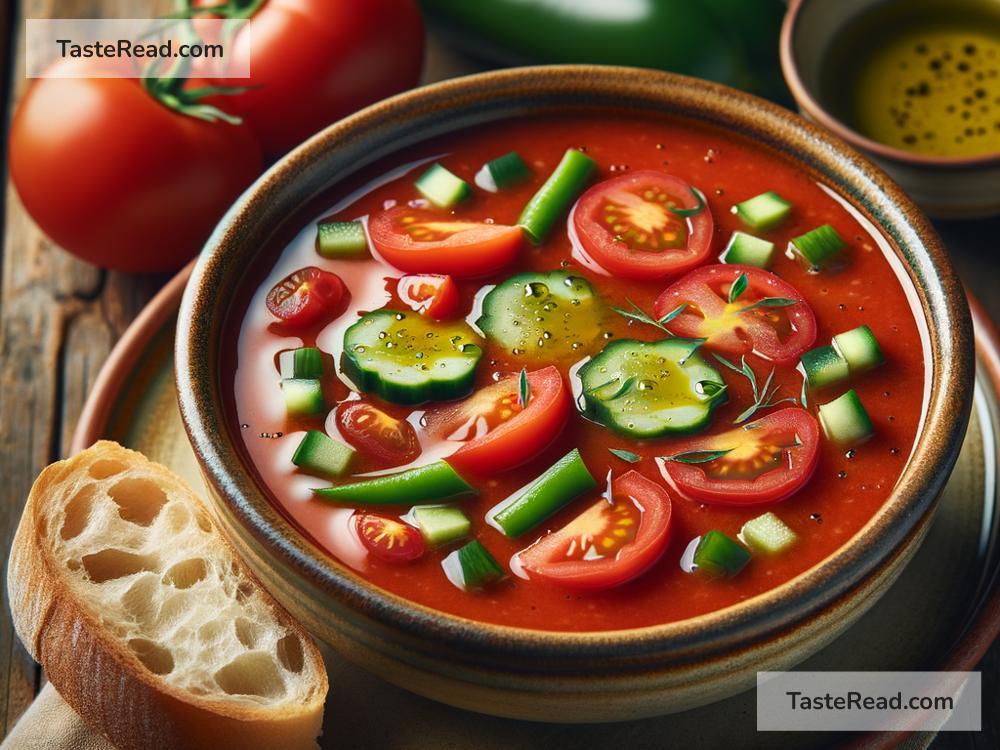Exploring the Legacy of the Spanish Gazpacho
When we dive into the rich tapestry of world cuisine, few dishes can claim as vibrant a legacy as the Spanish gazpacho. This chilled soup, often brightly colored and bursting with flavor, is more than just a dish; it’s a cultural emblem. Gazpacho hails from the sun-drenched landscapes of Andalusia, Spain, and carries with it centuries of tradition, adaptation, and fusion.
Origins: A Cool Solution to Hot Days
The genesis of gazpacho is a tale of necessity and ingenuity. Southern Spain, known for its scorching summers, provided the perfect environment for the birth of this cool, refreshing meal. Initially, gazpacho was a humble concoction made by farmers and laborers. They mixed stale bread, garlic, olive oil, vinegar, and water to create a cold soup that was easy to make and helped stave off the heat.
But what’s fascinating is how gazpacho has evolved over the centuries. The introduction of tomatoes, cucumbers, and peppers from the New World transformed it into the vibrant, tangy delicacy we know today. This illustrates the power of cultural exchanges in shaping culinary traditions.
The Gazpacho We Know and Love
Today, when we talk about gazpacho, we usually refer to the tomato-based version. This modern icon is a blend of ripe tomatoes, green peppers, cucumbers, garlic, onion, and a dash of vinegar—all finely blended into a smooth, cold soup. Olive oil is emulsified into the mixture, adding a silky texture and a rich depth of flavor.
This contemporary recipe is a far cry from its rustic origins, demonstrating the dynamic nature of culinary traditions. Yet, the essence of gazpacho remains: it’s a dish designed to cool and refresh, embodying the warmth and vibrancy of Spanish summers.
Beyond Borders: Gazpacho’s Global Journey
Gazpacho’s appeal isn’t bounded by geography. Its simplicity, combined with its bold flavors, has allowed it to traverse oceans and find a place in restaurants and homes worldwide. But as it traveled, it transformed. In different cultures, chefs and home cooks have put their own spin on this classic, incorporating local ingredients and adapting the recipe to suit local tastes.
You might find a gazpacho in New York that’s been infused with exotic spices, or a version in Tokyo that includes unique Japanese vegetables. Each iteration is a testament to gazpacho’s versatility and its ability to inspire creativity across cuisines.
Health in a Bowl
One cannot discuss the legacy of gazpacho without touching on its health benefits. Packed with fresh vegetables and rich in vitamins, minerals, and antioxidants, gazpacho is a nutritional powerhouse. It’s low in calories but filling, making it an ideal dish for those looking to maintain a healthy lifestyle.
Furthermore, the olive oil in gazpacho is a good source of heart-healthy fats. The combination of health benefits and refreshing taste makes gazpacho a popular choice for health-conscious individuals during the warm months.
Gazpacho Today: A Celebration of Tradition and Innovation
Nowadays, gazpacho continues to be a staple of Spanish cuisine and a beloved dish worldwide. It is a symbol of Spanish hospitality and the joy of sharing meals. Restaurants and homes alike serve gazpacho, often as an appetizer during the summer months, to welcome guests with something light, healthy, and truly delicious.
Moreover, chefs around the globe continue to experiment with gazpacho, introducing new flavors and techniques. From the addition of fruit like watermelon and strawberry to variations like green gazpacho made with herbs, the potential for innovation is endless. This willingness to explore and innovate ensures that the legacy of gazpacho will endure, adapting to the tastes of each new generation while remaining rooted in its rich history.
The Heart of Spanish Cuisine
In conclusion, gazpacho is more than just a dish; it’s a vibrant narrative of culture, tradition, and evolution. From its humble beginnings to its place on the global culinary stage, gazpacho represents the heart of Spanish cuisine: a celebration of life, a testament to the power of adaptation, and a timeless reminder of the joys of simple, nourishing food.
Whether enjoyed in a quaint Andalusian village, a bustling city far from Spain, or your own kitchen, gazpacho invites us to partake in its legacy—a legacy of freshness, flavor, and the enduring human spirit to create and share.
So, the next time you sip on a chilled bowl of gazpacho, remember, you’re not just tasting a dish but experiencing a rich history that spans continents and centuries. And who knows? Perhaps you’ll be inspired to add your own chapter to the continuing story of gazpacho.


